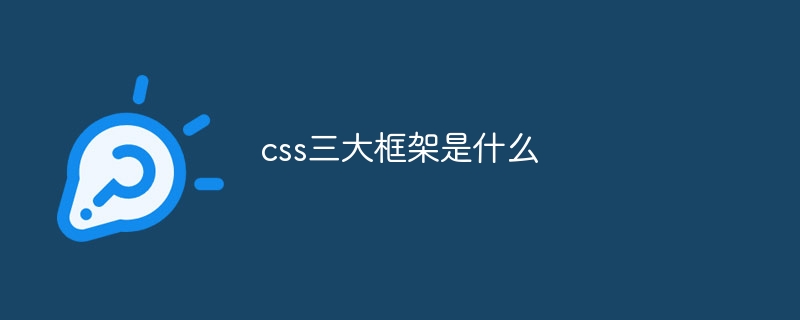Home >Common Problem >What are the three major frameworks of css
What are the three major frameworks of css
- 小老鼠Original
- 2023-10-09 17:43:491045browse
The three major css frameworks are Bootstrap, Foundation and Semantic UI. Detailed introduction: 1. Bootstrap, which provides a set of ready-made CSS styles and JavaScript plug-ins to quickly build responsive web pages and web applications. It has a simple design and easy-to-use components, allowing developers to easily create beautiful Web page layout and interactive effects; 2. Foundation, which provides a set of flexible CSS and JavaScript components, etc.

Operating system for this tutorial: Windows 10 system, Dell G3 computer.
CSS (Cascading Style Sheets) is a markup language used to describe the styles of web page elements. It allows web designers to more conveniently control the appearance and layout of web pages. In CSS, there are many frameworks to choose from to help developers build web pages more efficiently. Among them, the three most commonly used CSS frameworks are Bootstrap, Foundation and Semantic UI.
First of all, Bootstrap is one of the most popular CSS frameworks. It was developed by Twitter and first released in 2011. Bootstrap provides a ready-made set of CSS styles and JavaScript plugins to quickly build responsive web pages and web applications. It has a clean design and easy-to-use components, allowing developers to easily create beautiful web page layouts and interactive effects. Bootstrap also provides a powerful grid system that automatically adapts to different screen sizes, enabling responsive design. In addition, Bootstrap has a large number of themes and templates to choose from, allowing developers to quickly start projects.
Secondly, Foundation is another widely used CSS framework. It was developed by the company ZURB and first released in 2011. Foundation provides a flexible set of CSS and JavaScript components to help developers build modern web pages and applications. Similar to Bootstrap, Foundation also features a responsive design and grid system that can adapt to different devices and screen sizes. In addition, Foundation also provides some unique features such as customizable styles and modular build tools, allowing developers to customize and extend according to their needs.
Finally, Semantic UI is a relatively new CSS framework, released in 2013. Its design concept is to focus on semantics, that is, to describe the purpose and function of web page elements by using meaningful class names. Semantic UI provides a set of intuitive class names and syntax to make it easier for developers to understand and use. It also offers some unique features such as automated responsive layout and built-in animation effects. Semantic UI also features customizable themes and modular building tools, allowing developers to easily create unique web designs.
To sum up, Bootstrap, Foundation and Semantic UI are the three most commonly used CSS frameworks. They all provide a set of ready-made CSS styles and JavaScript plug-ins that can help developers build web pages and applications more efficiently. Each framework has its own unique features and advantages, and developers can choose the framework that suits them based on their needs and preferences. No matter which framework you choose, using a CSS framework can greatly improve development efficiency while ensuring the consistency of the appearance and layout of the web page.
The above is the detailed content of What are the three major frameworks of css. For more information, please follow other related articles on the PHP Chinese website!

